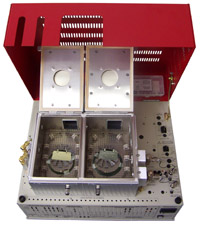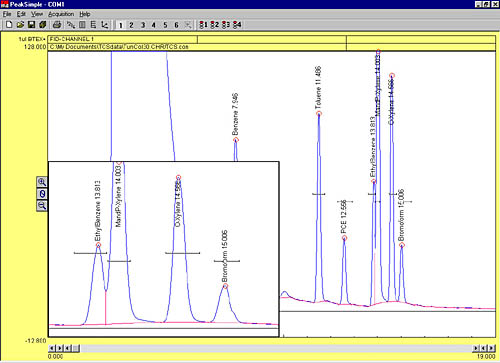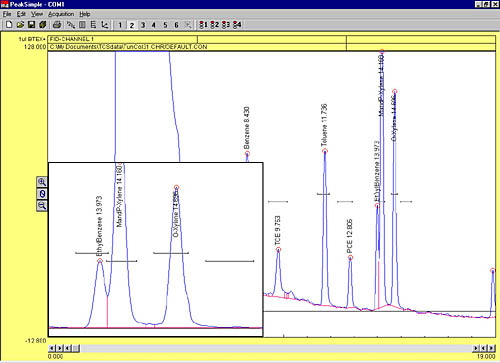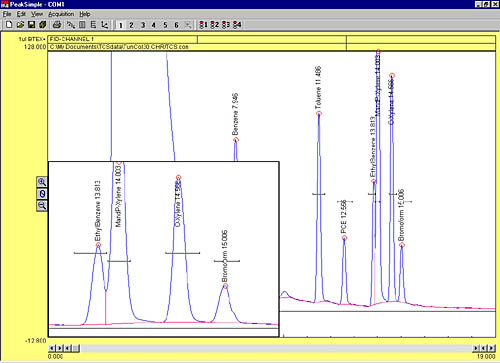Tunable
Column Selectivity (TCS) GC System
20
 |
|
|
As shown in the chromatograms at right, a sample of BTEX + bromoform is separated using the same temperature program on the non-polar column, while varying the temperature program of the polar column.
The bromoform peak at 150oC is nicely separated from the o-Xylene (top chromatogram), but at 180oC the bromoform peak blends into the o-Xylnene (middle chromatogram).
In the bottom chromatogram, the polar column is temperature ramped to yield a dramatic separation of the bromoform/o-Xylene, as well as near baseline resolution of m- and p-Xylene. This separation is normally not possible with any other known column.



|
8610-5500
|
TCS GC System
|
£10,448.00
|
|||
|
(VOLTAGE:
for 110VAC, use
8610-5500-1; for 220VAC, use 8610-5500-2)
|
|||||
|
Options
& Upgrades: additional detectors
with 4 channel serial or 6
channel USB PeakSimple data system, Methanizer,
H2-50 hydrogen
generator
|
|||||
Tunable Column
Selectivity (TCS) GC System
20